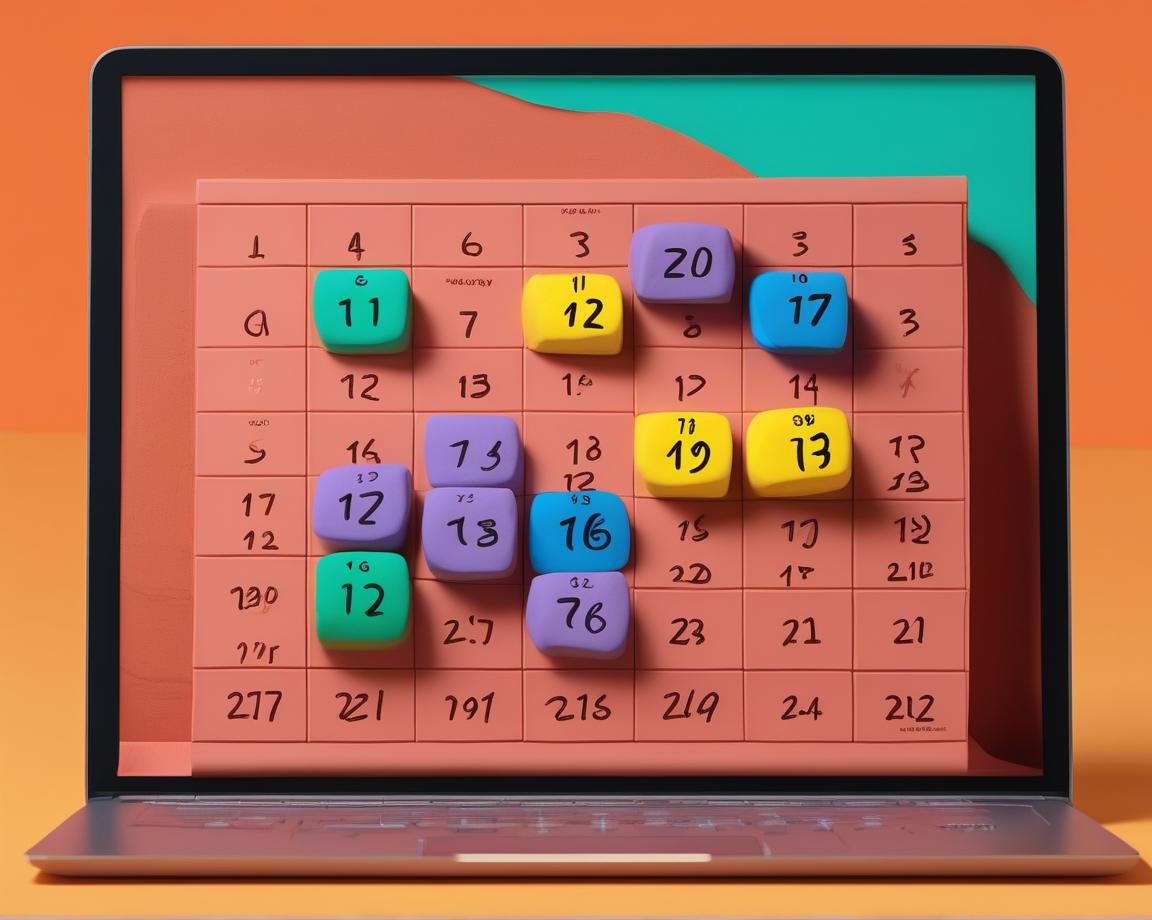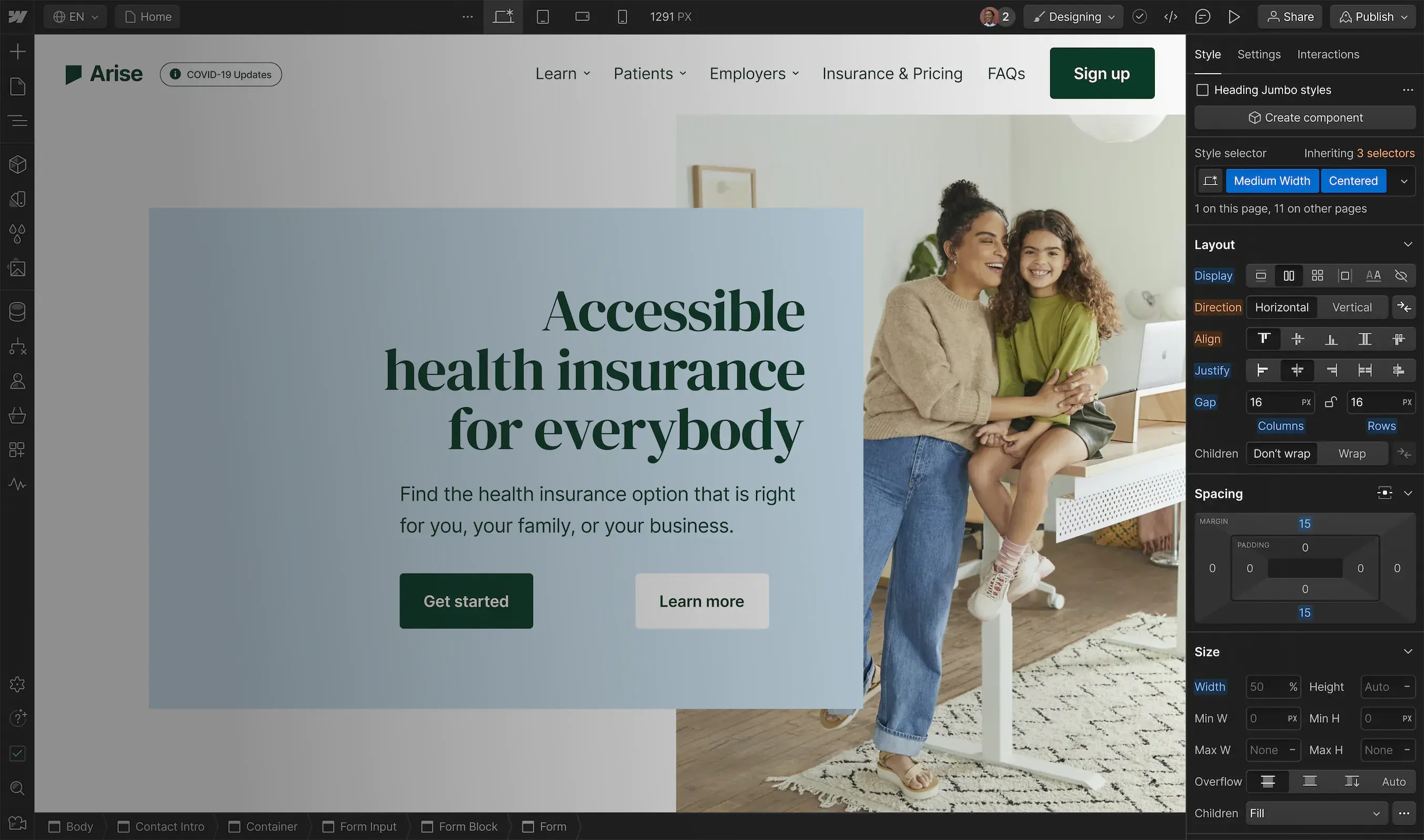Finding and using the best B2B email list providers is make-or-break for any sales team. You need accurate data to drive cold outreach and build your pipeline. Bad data will torpedo your deliverability and brand.
But with so many providers out there, how do you know who's got the freshest, most up-to-date contact info?
We decided to take matters into my own hands and test 8 top providers head-to-head using our unique data set of thousands of known valid emails (contacts that replied to us).
In this post, I'll share:
- My complete ranking methodology and results
- Behind-the-scenes insights into how each provider sources their data
- Pricing and unique strengths of each vendor
The truth is, no single provider can do it all. Instead of picking just one, use ALL of them in a waterfall. Submit your list to Provider A, then pass the remainder to Provider B.
You can easily waterfall providers on Clay - it takes one click and you only pay for the new emails you get. See how it works here.
Let's dive in and shed some light on this critical part of the sales process.
What are B2B email list providers, and who uses them?
B2B data providers maintain extensive databases of people’s business contact information, often focusing on work emails but including phone numbers, personal emails, and more. The best known email list providers include Apollo, Hunter, and others. Sales teams subscribe to B2B email list providers to get access to contact information for potential leads. The alternative—finding verified contact information manually—would be an untenable task for most teams.
Who are the best B2B email list providers?
Before we reveal our results, an important disclaimer: each of the providers below is a high quality vendor with unique assets. Do your own research about which provider best suits your target industry and company size.
In our test of B2B email list providers (drumroll, please…), Prospeo came in first, DropContact came in 2nd, and Findymail and Datagma were tied for 3rd.

Comparing B2B email list providers: our test criteria
In our test, we started with a base email list of work emails that we knew were valid and not catch-all. We submitted each person’s contact info (name, company, and/or Linkedin URL) to the email list providers and checked if they found the valid email we had on file. The email list providers with the highest match rates won our test.
Our base email list was composed of 4,238 individuals who had manually replied to campaigns we’d sent in the past two months. The campaigns were sent to HR leaders in companies with up to 10k employees, across various industries. Each person’s email had been run through Debounce and passed as valid and not catch-all (to learn about catch-all emails, go to the last section). We also checked that each person still worked at the same company.
We chose the eight B2B email list providers above for our test because they integrated with Clay or worked with us separately to enable us to include them. Some providers like Apollo, though notable on the market, had API rate limits that didn’t allow us to include them.
Pricing & features of each B2B email list provider
Each email list provider has its own pros and cons. Some excel at finding email data in certain geographic regions, like the EU vs. the USA. Others (like Snov, Nymblr, People Data Labs, Prospeo, and Dropcontact) can take LinkedIn URLs as inputs instead of requiring full names and company domains.
We’ve listed some more information about each provider below, including the price paid per email search for each provider’s lowest tier plan. Pricing per email search often decreases as plan size increases, so check the individual provider pages to find the plan that suits you best. Datagma is the most economical option on a per-email basis.
Prospeo
Prospeo is a promising new entrant in the email list provider space—and our winner! It offers the ability to find and verify emails using First and Last name as well as a Linkedin URL. It also claims to use real-time catch-all email validation to verify emails that other providers may tag as catch-all or risky. Prospeo has Chrome Extensions that allow you to scrape LinkedIn Sales Navigator and company websites, and it’s also GDPR compliant.
Prospeo pricing: Starts at ~$0.039 per email
Dropcontact
Dropcontact allows you to enrich profiles using just a LinkedIn URL to get information like emails, current job positions, gender, and standardized first and last names. It has great coverage in European countries and provides real-time, GDPR compliant data.
Dropcontact pricing: Starts at ~$0.026 USD per email
Datagma
Datagma offers capabilities beyond just finding emails, including data enrichment, lead scoring, and CRM syncing. It’s excellent for finding phone number data and also has great GDPR compliant European coverage.
Datagma pricing: Starts at ~$0.01 per email
Findymail
Findymail focuses entirely on finding B2B email data. It also features Apollo workflow automations and a Chrome extension that scrapes LinkedIn Sales Navigator and populates results into a Google Sheet. The Findymail team has also created other useful prospecting products, including Scrapybird (scrape emails from Twitter profiles) and Prospecdit (Reddit messaging automation).
Findymail pricing: Starts at ~$0.049 per email
Hunter
Hunter is one of the providers with the most brand recognition on the market. It includes a domain scraper that can help you scrape company websites, which is especially useful for emails that wouldn’t be found on LinkedIn. This is great for finding local business emails!
Hunter pricing: Starts at ~$0.098 per email
People Data Labs
People Data Labs (PDL) is an API-first company with a massive database beyond just emails. It also provides phone number data as well company revenue, employee growth, and more.
PDL uses various signals for its work email data testing and ingestion process. Thousands of users send them work emails to enrich from outside their platform, which creates intent signals on which emails are actually in use. The company also runs calculations on 750M+ professional profiles to garner insights upon the validity of certain profiles. Eric Aleman, Product Director, says “If we see the email eric.aleman@peopledatalabs.com in use in our data sources, we know it's more likely to be connected to my profile than eric@peopledatalabs.com. We know there are multiple Eric's working at PDL by aggregating our professional data.”
People Data Labs pricing: Contact them directly!
Nymblr
Nymblr is one of the only providers that lets you start from scratch and create a lead list using its own database of contacts.
Nymblr pricing: Starts at ~$0.025 per email.
Snov
Snov is a platform that allows you to both find email data and warm up & send email campaigns. You can also connect your LinkedIn account to Snov’s Chrome extension to scrape real-time information for different profiles. This can result in more accurate data than the default bulk search.
Snov pricing: Starts at ~$0.03 per email
With our results out of the way, let’s pull back the curtain to see how these B2B email list providers get their data in the first place—and why their accuracy varies.
Waterfall lead enrichment maximizes coverage across providers
Waterfall lead enrichment is a method for enriching leads that uses multiple email list providers as data sources instead of just one.
It’s simple: If Provider A cannot find emails for certain leads, you go to B. If you still have gaps, you switch to C, etc.
Waterfall enrichment way ensures you get the most accurate leads’ information and maximize enrichment coverage.

The manual alternatives to waterfall enrichment waste time and money:
- If you just use a single email list provider, you’ll have coverage gaps.
- If you run your entire list through multiple providers, you waste money by paying multiple times for the same data.
- If you try to replicate the waterfall process manually, you will undertake a time-consuming process, uploading increasingly smaller CSVs to data providers one at a time.
Clay’s waterfall enrichment features can help you get comprehensive data across multiple providers in just one click. Visit this link to learn more.
How do email list providers get data?
There are a few main ways that B2B email list providers collect information. No matter what strategy providers use to come up with potential emails, they need to validate them to confirm that they belong to a real person.
Email Permutations (most common)
Most people’s work emails follow the same format. Many providers guess possible email addresses through creating permutations of common naming conventions and company domains. For example, they may try eric@clay.com, enowoslawski@clay.com, etc. This approach is the most straightforward, but tends to have lower accuracy.
Web Scraping
Email list providers scrape websites, LinkedIn, and other sources looking for email addresses associated with companies and individuals. They might look for a string of text with an “@” symbol and a dot, so that eric.nowoslawski@clay.run would show up from LinkedIn as a scraped email. Most providers don’t do this and use email permutation instead.
Cooperative CRM syncing
Some providers partner with their customers to access their CRM systems to find known, valid email addresses. As a customer of these providers, you can then check for valid emails from other people’s CRMs and vice versa. This can be useful, but coverage is limited.
This method is especially useful when people have unusual or hard-to-guess work email formats. (For example, “eric@slackhq.com” is hard to guess for a Slack work email. If you were just using permutations, you might just check “eric@slack.com.”) It’s also useful for finding personal emails. When providers are looking for personal emails, they also might use information spread from data breaches or purchase information from sources like public WiFi login lists or companies that sell customer data.
Why B2B email list providers vary in data accuracy
Email list providers vary in accuracy mainly because validating emails takes a lot of money and time, requiring many burner inboxes and/or IP addresses. Providers with more resources often have larger pools of IP addresses to use—and higher accuracy as a result. Providers also use distinct methodologies for validating emails.
How email list providers validate via SMTP handshake
Most email list providers use server handshakes to validate emails. This involves making a connection to the mail server tied to the email domain and, in essence, asking "Does this email address exist?" The server can reply “yes” or “no.”
Server handshakes are done from large pools of IP addresses, because sending handshakes to invalid emails hurts IP address quality. In an ideal world, you could test 30k emails by sending SMTP handshakes from 30k unique IP addresses. This is prohibitively expensive. It’s more likely that a provider would test 30k emails from 5 IP addresses. Invariably, some handshakes come back as invalid, tarnishing the reputation of your IP address. When your IP address is tarnished, your data quality suffers.
There’s another problem with server handshake tests, namely that there are many emails that these tests cannot validate at all either way. These emails are called catch-all emails. Many companies set catch-all mail servers, which are configured to accept mail sent to any variant of their domain. Using a server handshake, if you were to try to validate Eric.nowoslawski@clay.com (which is a real, valid email) vs. asfd@clay.com (which is not a valid email), both would simply come back labeled as catch-all.
How email list providers validate catch-all emails
Server handshakes can’t help you distinguish whether an email belongs to a catch-all address or corresponds to an actual mailbox. To figure that out, you need to use more sophisticated tests.
One way to see whether an email belongs to a catch-all address is to actually send an email to that address. This requires many burner inboxes and IP addresses, since the testing process will result in many bounced emails that kill your deliverability. Companies with more resources often have a larger pool of IP addresses to test from.
How to decide what B2B email list provider to use
As a marketer, you need to calibrate your email volume and accuracy tolerance with your budget to find the best fit for your situation. One vendor may be more accurate than another, but whether it’s worth the difference in price is an individual decision.
For example, in the case of email verification tools, Zerobounce is 62x more expensive than Email List Validation. (You can buy 1 million credits on Email List Validation for $59 ($0.000059 per credit) vs. 24k credits for $89 on Zerobounce ($0.0037 per credit). Zerobounce invests in a lot more IP infrastructure for testing its emails, and as a consumer, you pick up that cost. Its data will be more accurate than Email List Validation’s data—but likely not by 62x.
Regardless, no email list provider will ever have 100% accurate data—which is why we always recommend waterfalling across multiple providers.
That concludes our first in-house test of data providers! Instead of paying for individual subscriptions, you can access nearly all of the data providers we tested directly on Clay. Try a few out for yourself. If you have any questions, comments, or requested additions, please reach out to friends@clay.com.
Finding and using the best B2B email list providers is make-or-break for any sales team. You need accurate data to drive cold outreach and build your pipeline. Bad data will torpedo your deliverability and brand.
But with so many providers out there, how do you know who's got the freshest, most up-to-date contact info?
We decided to take matters into my own hands and test 8 top providers head-to-head using our unique data set of thousands of known valid emails (contacts that replied to us).
In this post, I'll share:
- My complete ranking methodology and results
- Behind-the-scenes insights into how each provider sources their data
- Pricing and unique strengths of each vendor
The truth is, no single provider can do it all. Instead of picking just one, use ALL of them in a waterfall. Submit your list to Provider A, then pass the remainder to Provider B.
You can easily waterfall providers on Clay - it takes one click and you only pay for the new emails you get. See how it works here.
Let's dive in and shed some light on this critical part of the sales process.
What are B2B email list providers, and who uses them?
B2B data providers maintain extensive databases of people’s business contact information, often focusing on work emails but including phone numbers, personal emails, and more. The best known email list providers include Apollo, Hunter, and others. Sales teams subscribe to B2B email list providers to get access to contact information for potential leads. The alternative—finding verified contact information manually—would be an untenable task for most teams.
Who are the best B2B email list providers?
Before we reveal our results, an important disclaimer: each of the providers below is a high quality vendor with unique assets. Do your own research about which provider best suits your target industry and company size.
In our test of B2B email list providers (drumroll, please…), Prospeo came in first, DropContact came in 2nd, and Findymail and Datagma were tied for 3rd.

Comparing B2B email list providers: our test criteria
In our test, we started with a base email list of work emails that we knew were valid and not catch-all. We submitted each person’s contact info (name, company, and/or Linkedin URL) to the email list providers and checked if they found the valid email we had on file. The email list providers with the highest match rates won our test.
Our base email list was composed of 4,238 individuals who had manually replied to campaigns we’d sent in the past two months. The campaigns were sent to HR leaders in companies with up to 10k employees, across various industries. Each person’s email had been run through Debounce and passed as valid and not catch-all (to learn about catch-all emails, go to the last section). We also checked that each person still worked at the same company.
We chose the eight B2B email list providers above for our test because they integrated with Clay or worked with us separately to enable us to include them. Some providers like Apollo, though notable on the market, had API rate limits that didn’t allow us to include them.
Pricing & features of each B2B email list provider
Each email list provider has its own pros and cons. Some excel at finding email data in certain geographic regions, like the EU vs. the USA. Others (like Snov, Nymblr, People Data Labs, Prospeo, and Dropcontact) can take LinkedIn URLs as inputs instead of requiring full names and company domains.
We’ve listed some more information about each provider below, including the price paid per email search for each provider’s lowest tier plan. Pricing per email search often decreases as plan size increases, so check the individual provider pages to find the plan that suits you best. Datagma is the most economical option on a per-email basis.
Prospeo
Prospeo is a promising new entrant in the email list provider space—and our winner! It offers the ability to find and verify emails using First and Last name as well as a Linkedin URL. It also claims to use real-time catch-all email validation to verify emails that other providers may tag as catch-all or risky. Prospeo has Chrome Extensions that allow you to scrape LinkedIn Sales Navigator and company websites, and it’s also GDPR compliant.
Prospeo pricing: Starts at ~$0.039 per email
Dropcontact
Dropcontact allows you to enrich profiles using just a LinkedIn URL to get information like emails, current job positions, gender, and standardized first and last names. It has great coverage in European countries and provides real-time, GDPR compliant data.
Dropcontact pricing: Starts at ~$0.026 USD per email
Datagma
Datagma offers capabilities beyond just finding emails, including data enrichment, lead scoring, and CRM syncing. It’s excellent for finding phone number data and also has great GDPR compliant European coverage.
Datagma pricing: Starts at ~$0.01 per email
Findymail
Findymail focuses entirely on finding B2B email data. It also features Apollo workflow automations and a Chrome extension that scrapes LinkedIn Sales Navigator and populates results into a Google Sheet. The Findymail team has also created other useful prospecting products, including Scrapybird (scrape emails from Twitter profiles) and Prospecdit (Reddit messaging automation).
Findymail pricing: Starts at ~$0.049 per email
Hunter
Hunter is one of the providers with the most brand recognition on the market. It includes a domain scraper that can help you scrape company websites, which is especially useful for emails that wouldn’t be found on LinkedIn. This is great for finding local business emails!
Hunter pricing: Starts at ~$0.098 per email
People Data Labs
People Data Labs (PDL) is an API-first company with a massive database beyond just emails. It also provides phone number data as well company revenue, employee growth, and more.
PDL uses various signals for its work email data testing and ingestion process. Thousands of users send them work emails to enrich from outside their platform, which creates intent signals on which emails are actually in use. The company also runs calculations on 750M+ professional profiles to garner insights upon the validity of certain profiles. Eric Aleman, Product Director, says “If we see the email eric.aleman@peopledatalabs.com in use in our data sources, we know it's more likely to be connected to my profile than eric@peopledatalabs.com. We know there are multiple Eric's working at PDL by aggregating our professional data.”
People Data Labs pricing: Contact them directly!
Nymblr
Nymblr is one of the only providers that lets you start from scratch and create a lead list using its own database of contacts.
Nymblr pricing: Starts at ~$0.025 per email.
Snov
Snov is a platform that allows you to both find email data and warm up & send email campaigns. You can also connect your LinkedIn account to Snov’s Chrome extension to scrape real-time information for different profiles. This can result in more accurate data than the default bulk search.
Snov pricing: Starts at ~$0.03 per email
With our results out of the way, let’s pull back the curtain to see how these B2B email list providers get their data in the first place—and why their accuracy varies.
Waterfall lead enrichment maximizes coverage across providers
Waterfall lead enrichment is a method for enriching leads that uses multiple email list providers as data sources instead of just one.
It’s simple: If Provider A cannot find emails for certain leads, you go to B. If you still have gaps, you switch to C, etc.
Waterfall enrichment way ensures you get the most accurate leads’ information and maximize enrichment coverage.

The manual alternatives to waterfall enrichment waste time and money:
- If you just use a single email list provider, you’ll have coverage gaps.
- If you run your entire list through multiple providers, you waste money by paying multiple times for the same data.
- If you try to replicate the waterfall process manually, you will undertake a time-consuming process, uploading increasingly smaller CSVs to data providers one at a time.
Clay’s waterfall enrichment features can help you get comprehensive data across multiple providers in just one click. Visit this link to learn more.
How do email list providers get data?
There are a few main ways that B2B email list providers collect information. No matter what strategy providers use to come up with potential emails, they need to validate them to confirm that they belong to a real person.
Email Permutations (most common)
Most people’s work emails follow the same format. Many providers guess possible email addresses through creating permutations of common naming conventions and company domains. For example, they may try eric@clay.com, enowoslawski@clay.com, etc. This approach is the most straightforward, but tends to have lower accuracy.
Web Scraping
Email list providers scrape websites, LinkedIn, and other sources looking for email addresses associated with companies and individuals. They might look for a string of text with an “@” symbol and a dot, so that eric.nowoslawski@clay.run would show up from LinkedIn as a scraped email. Most providers don’t do this and use email permutation instead.
Cooperative CRM syncing
Some providers partner with their customers to access their CRM systems to find known, valid email addresses. As a customer of these providers, you can then check for valid emails from other people’s CRMs and vice versa. This can be useful, but coverage is limited.
This method is especially useful when people have unusual or hard-to-guess work email formats. (For example, “eric@slackhq.com” is hard to guess for a Slack work email. If you were just using permutations, you might just check “eric@slack.com.”) It’s also useful for finding personal emails. When providers are looking for personal emails, they also might use information spread from data breaches or purchase information from sources like public WiFi login lists or companies that sell customer data.
Why B2B email list providers vary in data accuracy
Email list providers vary in accuracy mainly because validating emails takes a lot of money and time, requiring many burner inboxes and/or IP addresses. Providers with more resources often have larger pools of IP addresses to use—and higher accuracy as a result. Providers also use distinct methodologies for validating emails.
How email list providers validate via SMTP handshake
Most email list providers use server handshakes to validate emails. This involves making a connection to the mail server tied to the email domain and, in essence, asking "Does this email address exist?" The server can reply “yes” or “no.”
Server handshakes are done from large pools of IP addresses, because sending handshakes to invalid emails hurts IP address quality. In an ideal world, you could test 30k emails by sending SMTP handshakes from 30k unique IP addresses. This is prohibitively expensive. It’s more likely that a provider would test 30k emails from 5 IP addresses. Invariably, some handshakes come back as invalid, tarnishing the reputation of your IP address. When your IP address is tarnished, your data quality suffers.
There’s another problem with server handshake tests, namely that there are many emails that these tests cannot validate at all either way. These emails are called catch-all emails. Many companies set catch-all mail servers, which are configured to accept mail sent to any variant of their domain. Using a server handshake, if you were to try to validate Eric.nowoslawski@clay.com (which is a real, valid email) vs. asfd@clay.com (which is not a valid email), both would simply come back labeled as catch-all.
How email list providers validate catch-all emails
Server handshakes can’t help you distinguish whether an email belongs to a catch-all address or corresponds to an actual mailbox. To figure that out, you need to use more sophisticated tests.
One way to see whether an email belongs to a catch-all address is to actually send an email to that address. This requires many burner inboxes and IP addresses, since the testing process will result in many bounced emails that kill your deliverability. Companies with more resources often have a larger pool of IP addresses to test from.
How to decide what B2B email list provider to use
As a marketer, you need to calibrate your email volume and accuracy tolerance with your budget to find the best fit for your situation. One vendor may be more accurate than another, but whether it’s worth the difference in price is an individual decision.
For example, in the case of email verification tools, Zerobounce is 62x more expensive than Email List Validation. (You can buy 1 million credits on Email List Validation for $59 ($0.000059 per credit) vs. 24k credits for $89 on Zerobounce ($0.0037 per credit). Zerobounce invests in a lot more IP infrastructure for testing its emails, and as a consumer, you pick up that cost. Its data will be more accurate than Email List Validation’s data—but likely not by 62x.
Regardless, no email list provider will ever have 100% accurate data—which is why we always recommend waterfalling across multiple providers.
That concludes our first in-house test of data providers! Instead of paying for individual subscriptions, you can access nearly all of the data providers we tested directly on Clay. Try a few out for yourself. If you have any questions, comments, or requested additions, please reach out to friends@clay.com.































































